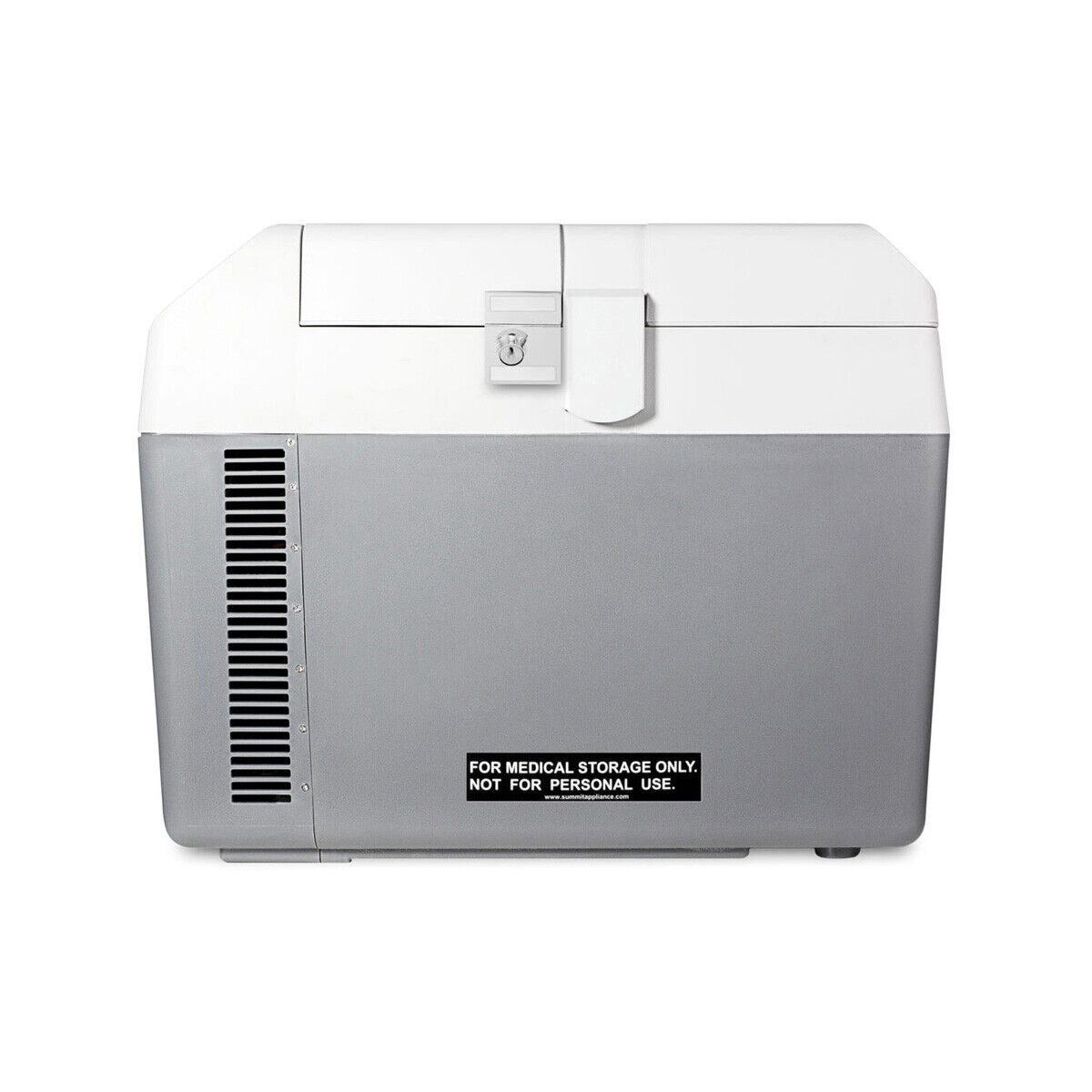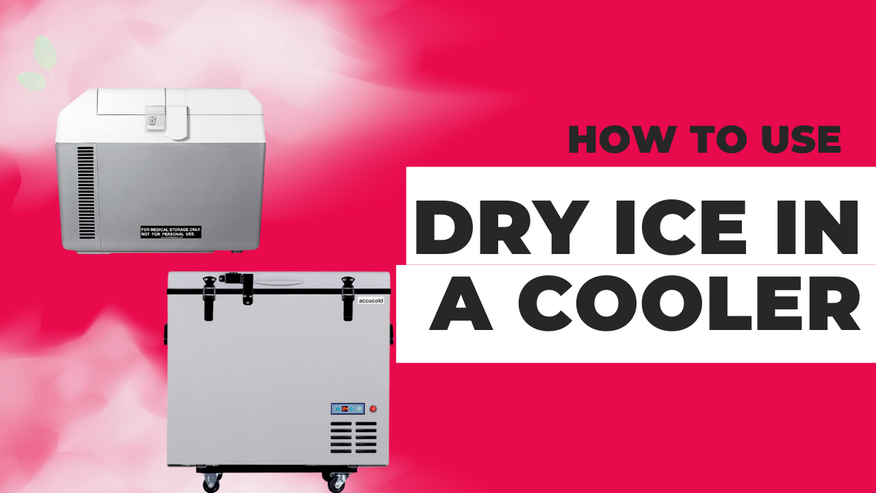Aug 16th 2023 - Team Member
How to Use Dry Ice in a Cooler
With the right knowledge and precautions, dry ice can be an invaluable resource in your commercial kitchen. Whether you're shipping goods, catering an off-site event, or storing items during a power outage, understanding how to utilize dry ice effectively can make a significant difference. Let's explore this further.
How to Use Dry Ice in a Cooler
- Choose the Right Cooler
- Utilize Dual Coolers
- Calculate the Perfect Dry Ice Quantity
- Pre-Freeze Your Food
- Handle Dry Ice Safely with Protective Gloves
- Insulate Dry Ice with Brown Paper
- Strategically Position Your Food and Dry Ice
- Minimize Air Spaces with Newspaper
- Store Your Cooler Smartly
- Dispose of Dry Ice Safely
Dry ice is solid carbon dioxide (CO2) that sublimates at -78.5°C (-109.3°F), turning directly from solid to gas. This unique property makes dry ice a prime choice for cooling and freezing applications, as it leaves no water residue. But, with these benefits come specific safety precautions.
Step 1: Choose the Right Cooler

Dry ice, or frozen carbon dioxide, sublimates directly into CO2 gas as it warms. Hence, using a cooler designed for proper ventilation and insulation can prevent pressure build-up and potential explosion.
Step 2: Utilize Dual Coolers
Camping with a group? Using two coolers can significantly increase your storage capabilities. Use one as a 'freezer', stocked with dry ice and regular ice, and the second as a 'fridge' for your food and drinks. This arrangement slows down the dry ice sublimation and reduces the risk of freezing your food.
Step 3: Calculate the Perfect Dry Ice Quantity
Determining the right quantity of dry ice can be tricky, but crucial. You want enough to keep your food cold throughout your trip, but not so much that it overflows your cooler. A good rule of thumb is to maintain a 2:1 ratio of ice to food/drinks.
Step 4: Pre-Freeze Your Food
Freezing your food before the trip can help maintain a lower cooler temperature, thereby slowing down the sublimation of the dry ice.
Step 5: Handle Dry Ice Safely with Protective Gloves

Given the extreme cold of dry ice, it can cause burns upon direct contact. Insulated rubber gloves provide excellent protection, and it's prudent to keep burn ointment on hand as well.
Step 6: Insulate Dry Ice with Brown Paper
Wrapping your dry ice in newspapers or brown paper serves dual purposes - insulation and safety. It slows the sublimation process and protects against potential burns.
Step 7: Strategically Position Your Food and Dry Ice
Careful placement of food and dry ice in your cooler can keep your supplies cold without freezing them. Place the ice at the top to leverage the fact that cold air sinks, or at the bottom for convenience and reduced handling.
Step 8: Minimize Air Spaces with Newspaper
The less air in your cooler, the slower the dry ice will sublimate. Using crumpled newspapers or brown papers to fill any remaining air gaps after packing can enhance the cooler's efficiency.
Step 9: Store Your Cooler Smartly
 Even the highest quality coolers perform better in the shade. Locate a cool spot to keep your cooler to extend the lifespan of the ice.
Even the highest quality coolers perform better in the shade. Locate a cool spot to keep your cooler to extend the lifespan of the ice.
Step 10: Dispose of Dry Ice Safely
Proper disposal of leftover dry ice is vital for safety. Leaving it outside to sublimate naturally, or in a well-ventilated room, is generally the best option. Keep an eye on it to prevent children or pets from coming into contact with it.
The Do's and Don'ts of Dry Ice Safety
Dry ice demands respect. Given its extreme cold, it can cause frostbite or burns upon direct skin contact. Always use insulated gloves and goggles when handling dry ice. Furthermore, dry ice emits CO2 gas as it sublimates. This gas can lead to asphyxiation in closed, unventilated spaces. Therefore, always ensure adequate ventilation when using dry ice.
Securing Dry Ice for Your Kitchen Needs
Many ice supply companies and larger grocery stores carry dry ice. You'll generally find it in two forms: blocks and pellets. Pellets offer convenience and easy distribution but sublimate more quickly. On the other hand, blocks last longer but may present challenges in fitting certain cooler spaces.
Expert Tips for Packing Your Cooler with Dry Ice
For optimal results, pre-chill your cooler before introducing dry ice. Since cold air sinks, place the dry ice on top of the items in your cooler. Wrapping the dry ice in a newspaper can also help to insulate it and extend its lifespan.
How Much Dry Ice Do You Need?
The quantity of dry ice needed hinges on various factors, including the cooler's size, the ambient temperature, the initial temperature of the items to be cooled, and the duration they need to be kept cool. As a general guideline, a 40-quart cooler requires around 10-20 pounds of dry ice to stay cool for approximately 24 hours.
Disposing of Leftover Dry Ice: A Safe Approach

Proper disposal of leftover dry ice is crucial. Avoid disposing of it in sinks, toilets, or regular trash cans. Instead, allow it to fully sublimate in a well-ventilated area, away from children and pets. Sealing leftover dry ice in a container can lead to dangerous gas build-up and potential explosion, so this must be avoided.
Dry Ice: A Versatile Cooling Solution
From camping to transporting frozen goods, during power outages, or even in making homemade ice cream, dry ice is a versatile tool. It is a valuable resource for commercial kitchens, making it worthy of understanding and mastering.
Remember, while dry ice is a valuable tool, it should be handled with caution due to its extreme cold and the potential for gas build-up. Arm yourself with the right knowledge and equipment, and you can make the most of this unique cooling agent in your commercial kitchen operations.

